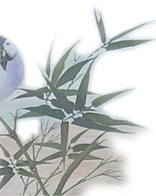|
|
|
 |
English Lesson--007:One, Two, Three Miles
by Mr. Jim Broadbent (Canada)
|
 |
 I often think that the mistakes that I made maybe also the same mistakes that by the other friends who are learning English. So, when I receive a good comment about my English writing or translation, I always want to make it to be shared by more friends who are needing help. Mealwhile, to make to enlarge and extended the the value of the work by the native English speaker friend. So, today, I would like to publish the wonderful article by Mr. Jim Broadbent here and hope it is helpful to more friends and hope you enjoy it. :-) I often think that the mistakes that I made maybe also the same mistakes that by the other friends who are learning English. So, when I receive a good comment about my English writing or translation, I always want to make it to be shared by more friends who are needing help. Mealwhile, to make to enlarge and extended the the value of the work by the native English speaker friend. So, today, I would like to publish the wonderful article by Mr. Jim Broadbent here and hope it is helpful to more friends and hope you enjoy it. :-)
If you would like to publish your own opinions or your works about your own cultures or anything positive, optimistic and helpful, if you have any questions, comments and sugguestions, please write to shirley@ebridge.cnor leave a message in the Forum, you are welcomed.
--Shirley
Mon, Nov 7, 2005
Hi Shirley;
I think every culture has a children's rhyme to help their young ones to learn how to count. This poem that you have shown us today reminds me of an English childrenÔÇÖs rhyme
One, two, buckle my shoe,
Three four, shut the door,
Five six, pick up sticks,
Seven, eight, lay them straight,
Nine, ten, a big fat hen.
One, two, three, four, five, six seven, eight, nine,
ten.
Note in this childrenÔÇÖs poem how there is rhythm and rhyme. The poem is usually sung which makes it fun and easy for children to learn how to count to ten.
This is the poem and your translation.
MAIN MEANING OF THE PEOM:
To give a look,
it's two or three mile's landscape,
a village with four or five households with smoke from
kitchen chimneys over there.
There are six or seven pavilions in the mountains,
eight, nine or ten flowers are blooming by the road.
:-)
CHINESE PRONUNCIATION - LISTEN TO SHIRLEY SANGE THE
POEM:
õ©Çµ£øõ║îõ©ëÚçî-- Yi1 wang4 er4 san1 li3´╝î
þ⃵ØæÕøøõ║öÕ«Â-- yan1 cun1 si4 wu3 jia1ÒÇé
õ║¡ÕÅ░Õà¡õ©âÕ║º--ting2 tai2 liu4 qi1 zuo4´╝î
Õà½õ╣ØÕìüµ×ØÞè▒-- ba1 jiu3 shi2 zhi1 hua1ÒÇé
As you said earlier, this is a children's poem. But your translation is not a simple childlike translation. In translating this poem to English you should keep the same purpose in mind...that is, to help children learn their numbers from one to ten.
This would be my translation of the poem
Look ahead, one, two, three miles,
Village smoke, four, five houses,
Pavilions, six, seven tents,
And flowers, eight, nine, ten in a row.
Notice that there is symmetry to this poem. The first and last lines have three numbers and the middle section has two numbers in each line. I don't have a perfect rhythm to each line as I would like, but I can imagine a kindergarten class of children chanting this poem with their teacher.
 The poem did have its desired effect on you though. It stirred your imagination and that is the purpose of poetry. I like the fact that you felt inspired to create a painting from the verse. Again I could imagine a teacher doing the same in his/her classroom and pointing to it as she sang with the children. The poem did have its desired effect on you though. It stirred your imagination and that is the purpose of poetry. I like the fact that you felt inspired to create a painting from the verse. Again I could imagine a teacher doing the same in his/her classroom and pointing to it as she sang with the children.
Your friend
Jim
|
|
|
|
| |
| |
|

